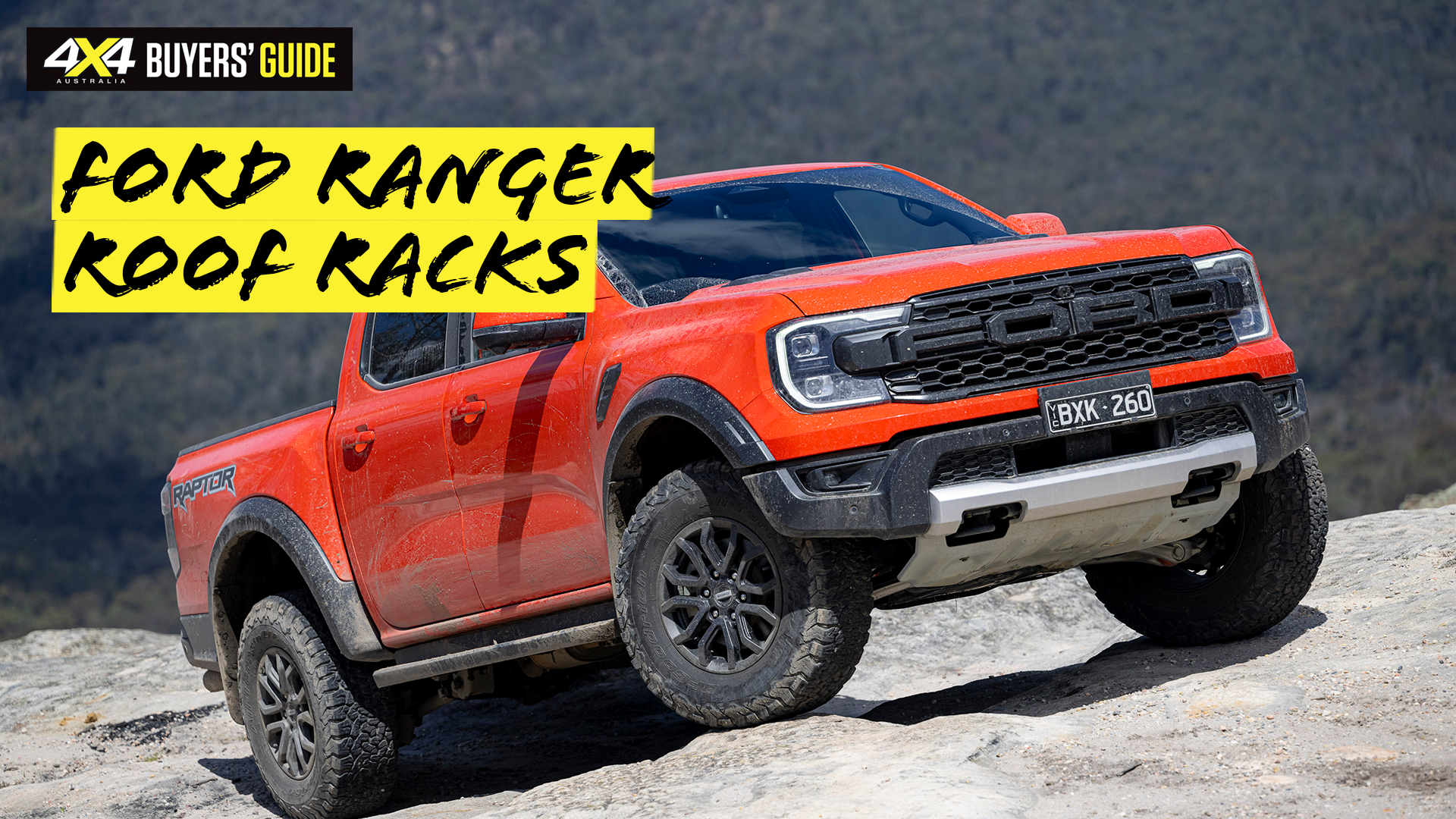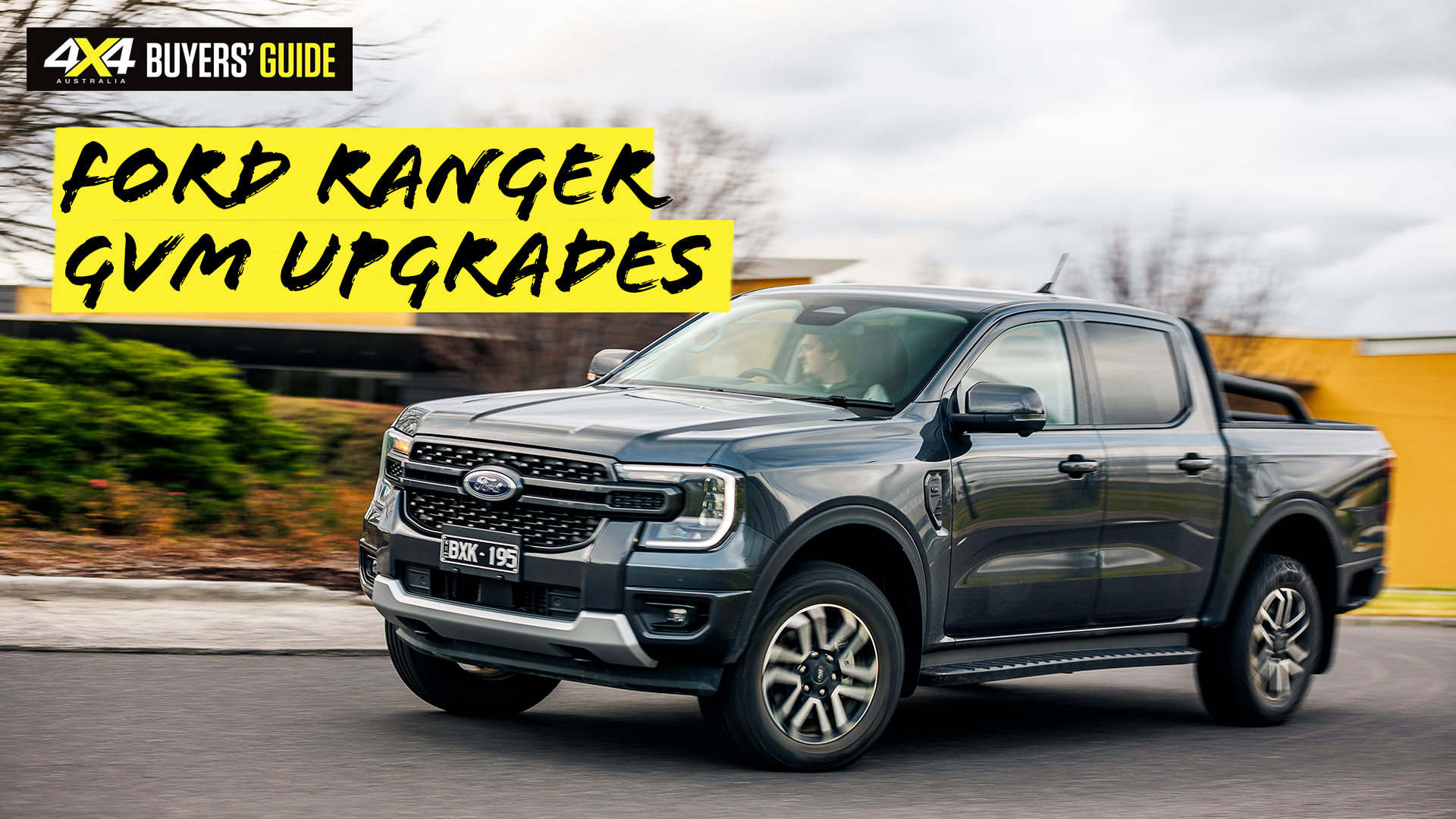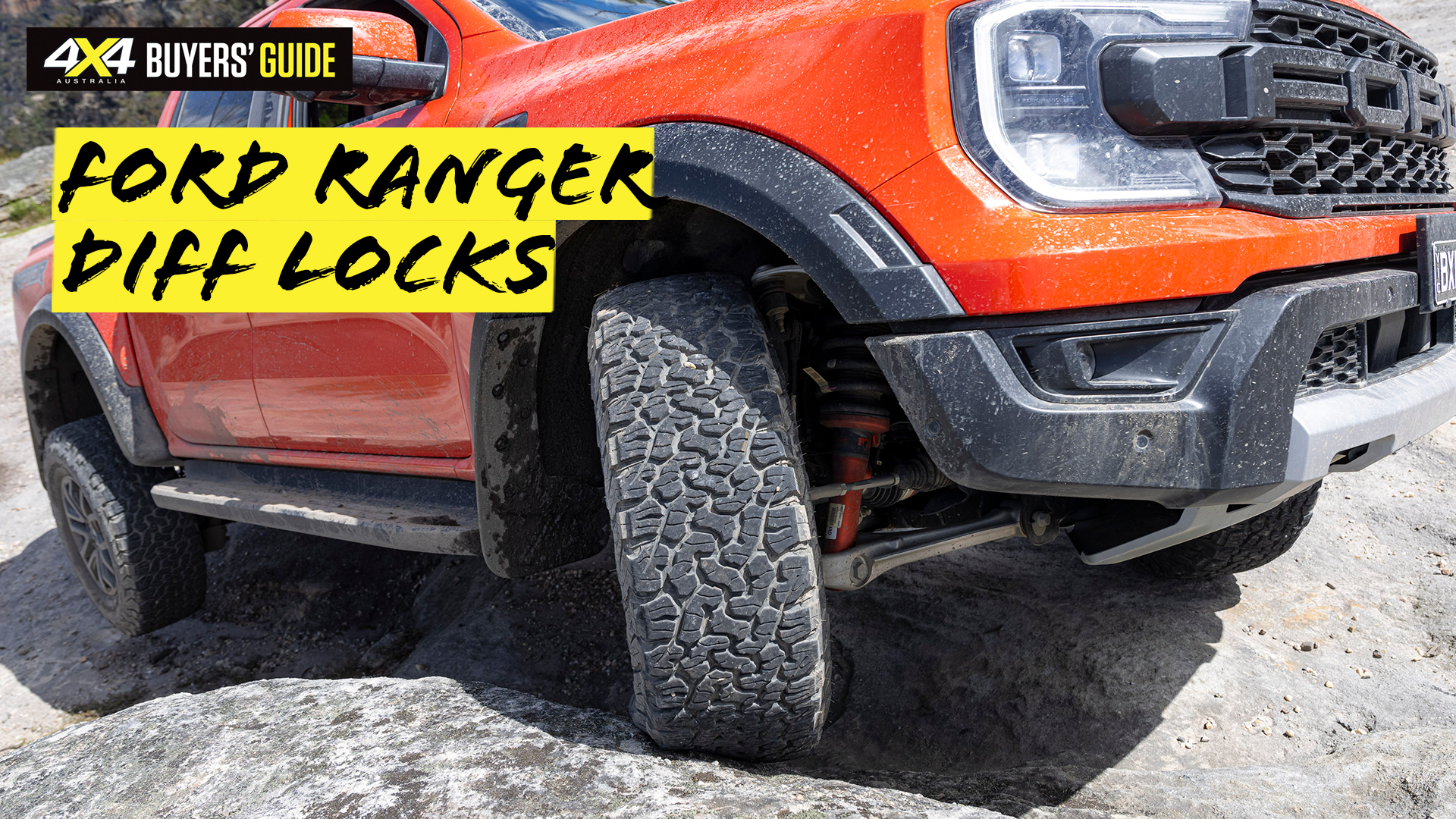If space is limited when packing for a remote-area adventure, then you may want to consider installing a roof rack.
With a rack up top, you can securely transport extra equipment without sacrificing valuable space inside the cab or in the tray. Plus, you can transport items that can’t be loaded inside such as recovery boards.
Here’s a selection of roof racks we recommend. They’re intended as a starting point, to give you an idea of what’s available. We’ve also included information on Ford Australia’s genuine accessories, in case you’d prefer to stick to OEM.
What it is: Storage systems for your roof.
Why you need it: The roof is a great place to store light, bulky gear such as tents and chairs.
Buying tips: The Ranger’s roof load limit is 85kg, and that weight has to include the weight of the rack. So if your rack weighs 30kg, that’s 55kg of gear you can carry. That 85kg only refers to the cab of the vehicle; any service body or canopy will have its own limit.
| Material | Coating | Weight | |
|---|---|---|---|
| Rola Titan Tray | Aluminium | Powdercoated | Varies with model |
| ARB Base rack | Aluminium | Powdercoated | 20kg |
| OCAM flat roof rack without mesh | Aluminium | Powdercoated | 16kg |
| Rhino Pioneer platform | Aluminium | Powdercoated | 20kg |
| Yakima platform | Aluminium | Powdercoated | 21kg |
Rola Titan Tray
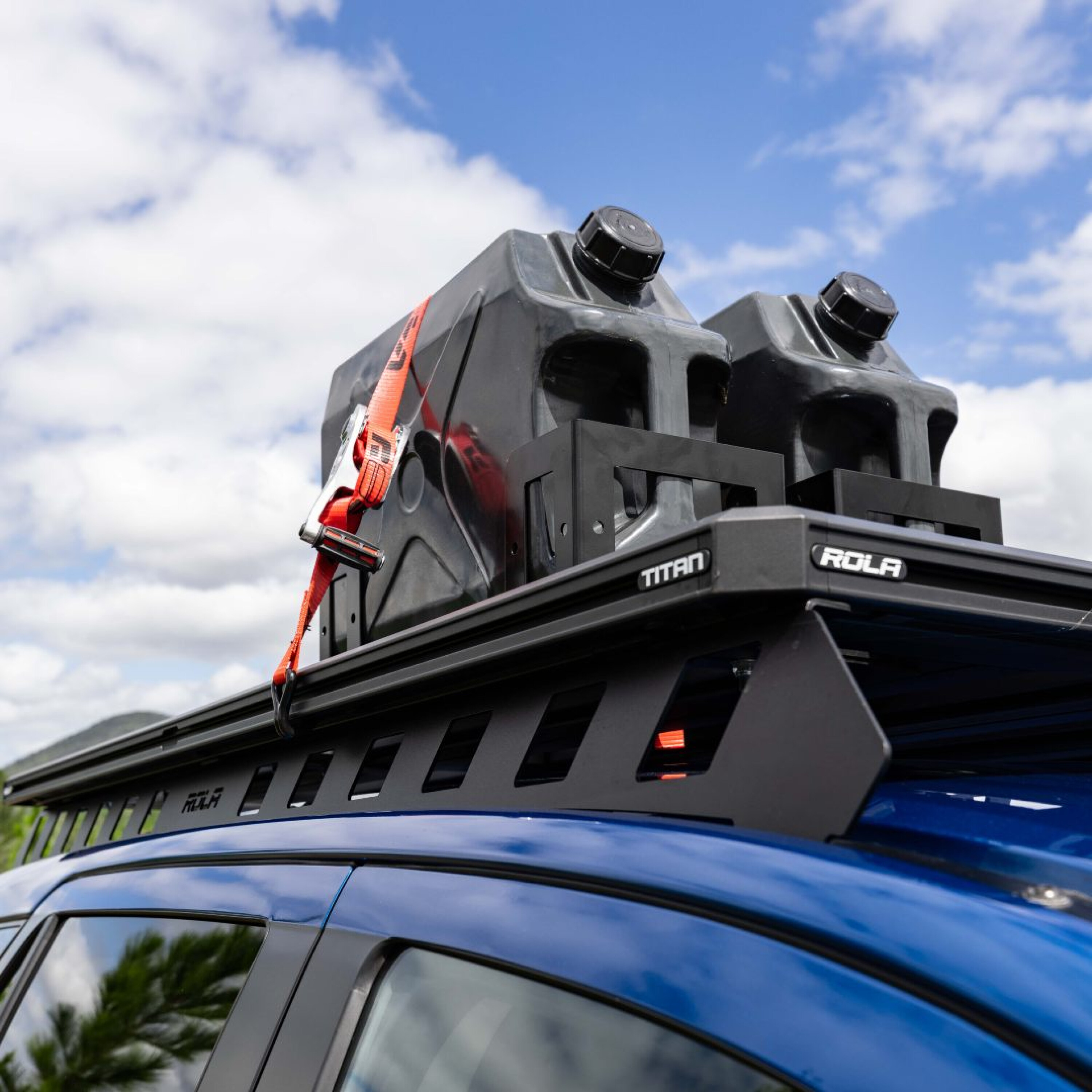
The new Titan Tray is the perfect solution for transporting with ease and efficiency. Its robust profile and sleek features make it an ideal choice for those looking for maximum stability and versatility. With its patented channels and corner entry points, you can easily customise the tray to fit your needs. Plus, its adjustable plank spacing allows for a wide variety of items to be mounted with maximum stability.
Rola Titan Tray specifications
| Material | Aluminium |
|---|---|
| Coating | Powercoated |
| Weight | Varies with model |
Things we like
- Versatile channels and entry points
- Hook attachment channels
- Lightweight yet super strong
Not so much
- N/A
ARB Base rack
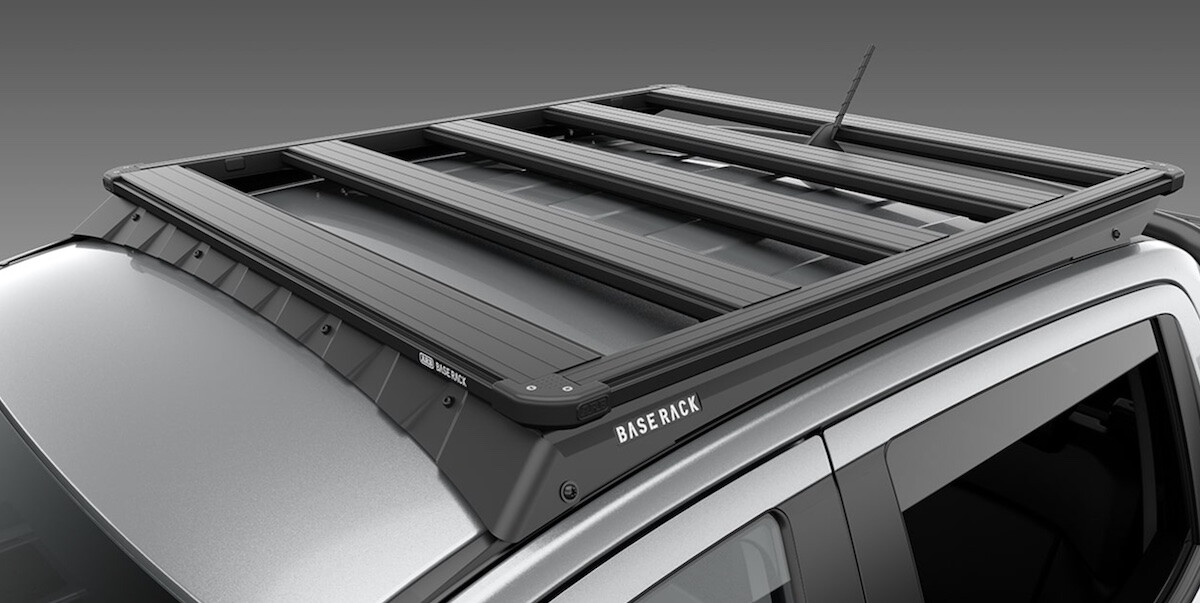
The ARB Base rack is a roof rack designed for off-road and outdoor enthusiasts. They are made from high-strength, lightweight aluminum and feature a modular design that allows for easy customisation and expansion.
The racks are available in various sizes and configurations to fit a wide range of vehicles, and can be used to carry a variety of equipment and gear such as kayaks, bikes and tents. The racks feature a unique mounting system that reduces wind noise and vibration, and they can be easily installed or removed without the need for specialised tools.
ARB Base rack specifications
| Material | Aluminium |
|---|---|
| Coating | Powder coated |
| Weight | 20kg |
Things we like
- Innovative
- Quality build
- Integrated cable ducting
Not so much
- Limited range of accessories
- Not fully compatible with all T-slot accessories
OCAM flat roof rack
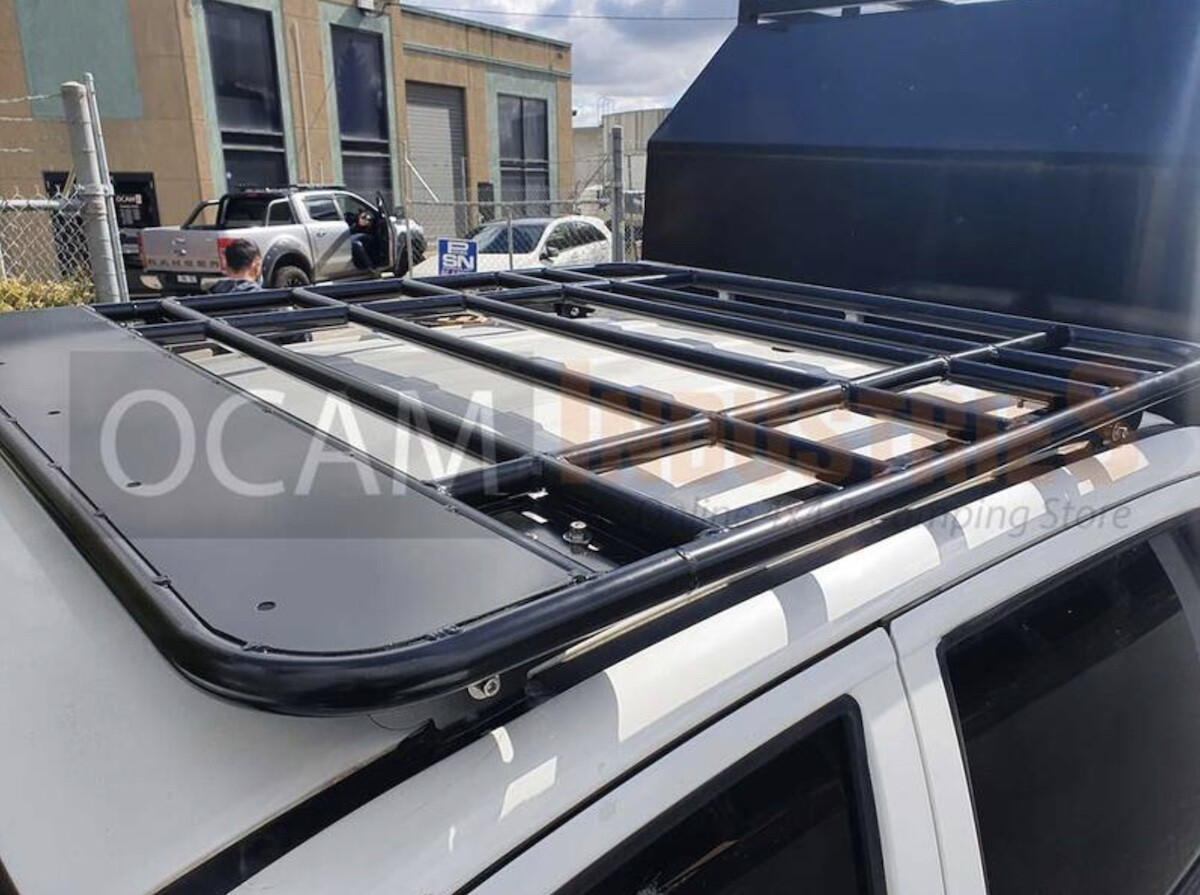
The OCAM Flat roof rack is a strong and durable commercial-grade roof rack that comes with all the necessary hardware for installation. It features six internal cross-bars and dual cross-bars to the mounting plates, ensuring extra support and preventing cracking on rough roads. Quality rubbers are used to protect your vehicle’s paint, and the rack is finished in a high grade black powder coat for added durability. It also comes with stainless-steel hardware and an Allen key for easy installation.
OCAM flat roof rack specifications
| Material | Aluminium |
|---|---|
| Coating | Powder coated |
| Weight | 16kg |
Things we like
- Lightweight
- Stainless-steel fasteners
- Mounting plates straddle two crossbars
Not so much…
- No T-slot channels
Rhino-Rack Pioneer platform
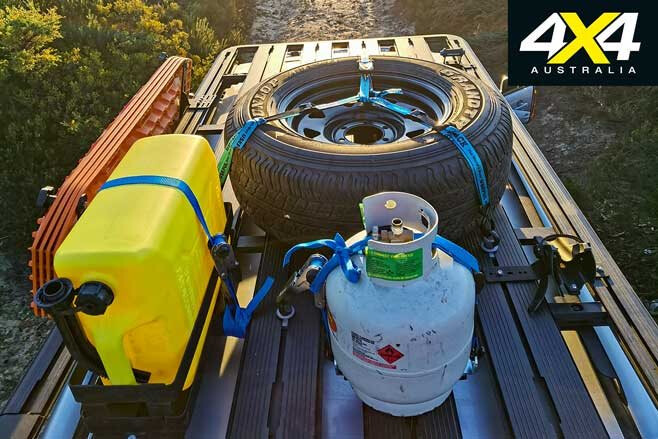
The Rhino-Rack Backbone and Pioneer platform combination comfortably delivers on what it has been designed for. It is low-profile, rugged and hard wearing, with a high build quality. The platform is quiet on road, looks stylish and offers a plethora of options for everything from trade to 4×4 accessories.
Rhino-Rack Pioneer platform specifications
| Material | Aluminium |
|---|---|
| Coating | Powder coated |
| Weight | 20kg |
Things we like
- Additional slots front and rear
- Fully compatible with T-slot accessories
- 100 per cent load-carrying capacity off-road
Not so much…
- Expensive
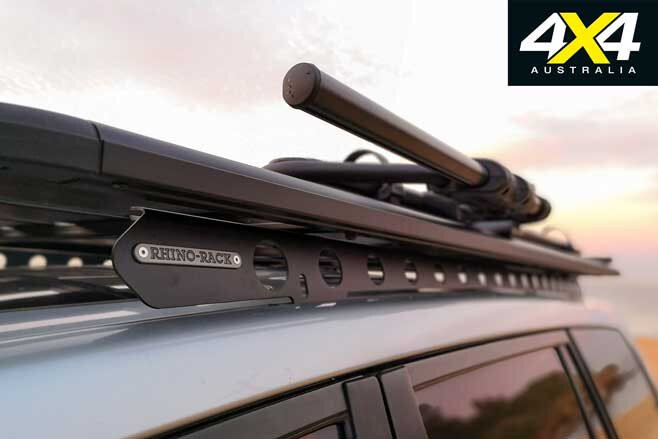
Yakima LockNLoad platform
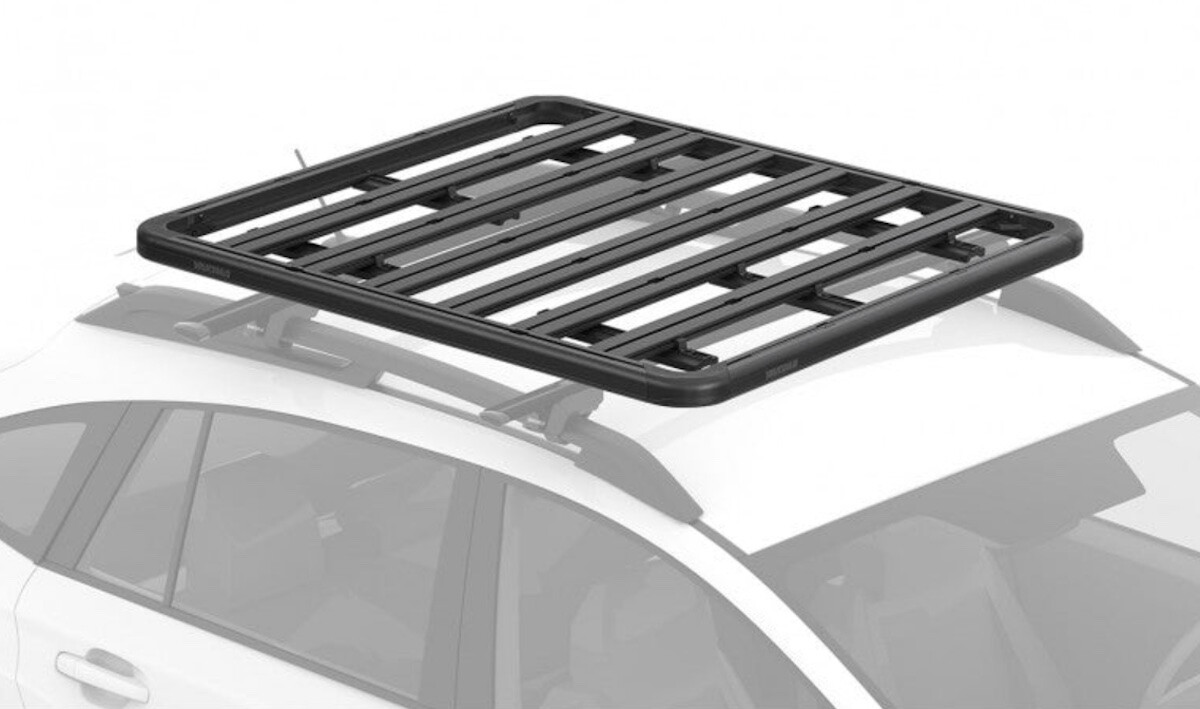
The LockNLoad platform is a versatile solution for carrying touring or off-road gear. It features innovative 21mm accessory slots on slats, with a beefy profile that looks tough and is built to last. The east-west slats provide flexibility to fit your accessories, and the versatile perimeter mounting tracks offer more ways to mount your gear. The platform is made of corrosion-resistant powdercoated aluminium and additional e-coating. It also has seven latitudinal slats, adding to its durability and strength.
| Material | Aluminium |
|---|---|
| Coating | Powder coated |
| Weight | 21kg |
Things we like
- T-slots around perimeter
- Compatible with T-slot accessories
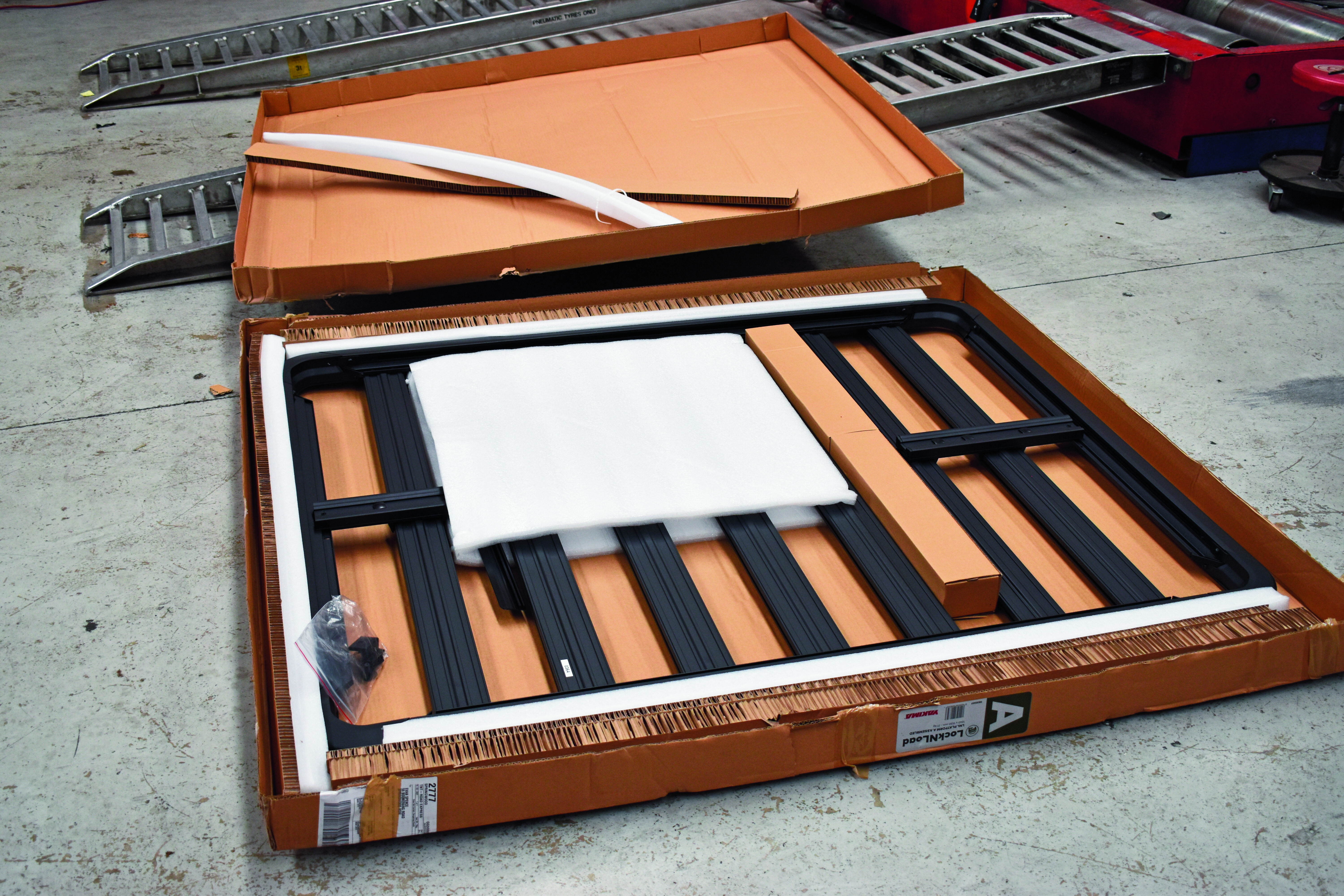
Ford Australia/ARB licensing agreement
Ford Australia have a licensing agreement with ARB. Order ARB accessories when you order your next-gen Ranger, and they’ll be covered by Ford’s five-year warranty. So if you have a warranty issue, there’s no grey areas about which company’s responsible.
If you order ARB accessories after purchase (through a Ford dealer), they’ll be covered by the remainder of the warranty period.
If you’d like to know more about the Ford/ARB partnership, then go here.
Buyers’ Guide: 2024 Ford Ranger roof racks
Storage space in most touring vehicles is at a premium. When we start adding canopies with fridge slides, drawers, kitchens and anything else to make life on the road easier, we start to run out of space to store bulky items like swags, tents and recovery boards.
This is where roof racks come into play. They’re brilliant for transporting bulky but light items. The old square steel bars or big heavy steel racks are a thing of the past – these days we have bars based on aeroplane and bird wings.
Designed for aerodynamics and noise reduction, there’s no need to be driving down the motorway sounding like there’s a kettle boiling on the roof.
With the rising popularity of rooftop tents, roof pods and every accessory mounted under the sun (shovels, high-lift jacks, traction-board quick releases), improved mounting systems are essential. It’s never been easier to strap down your gear and head bush.
The 2023 Ford Ranger comes with an increased roof-load rating over the previous models (85kg vs 80kg) and, as a result, suits a roof rack even more.
Quality (value for money)
A quick browse on the internet will expose dozens of cheap roof-rack options. The problem is, most of them have been designed based on something as aerodynamic as a brick, and they don’t have any published load rating.
See that bloke driving along being chased by all the neighbourhood dogs? It’s either because he’s a butcher with sloppy packing skills or because his roof racks are whistling like crazy.
The lack of a published load rating is risky – not just for you and your Ranger – but for anyone who might be following you. Overload a roof rack when off-road and you’re asking for trouble. There’s plenty of stories around about entire racks coming free, load and all still attached.
For these reasons we’ve excluded anything without a published load rating and have stuck to reputable brands. Value-adding features like clever accessory-mounting systems and efficient designs have been highly regarded here. A solid warranty ensures peace of mind and adds to that value, too.
Functionality
A roof rack is essentially to transport stuff. Every time you do this, you either need to use a purpose-built accessory carrier or you need to strap it down. Attaching accessories and strapping down anything else needs to be simple.
How easy this is to do will tend to govern how often you’re willing to use the racks. Modern roof racks include slots along the top ready to mount eyelets for strapping gear down or ready-to-bolt-on accessory carriers.
Roof racks that require straps and ropes to be tied around the bars or hooked into areas that aren’t designed for that purpose, are hard work and just make life difficult.
When considering what you will use your roof rack for, platforms have the added advantage of a totally flat surface ready to take swags, tents, etc. at a pinch or have a rooftop tent mounted.
Racks that can be quickly removed are super handy for anyone who might use their vehicle for the shopping run or need to park in a low-height garage. The ability to undo four bolts and fit in your garage versus a 90-minute uninstall process, is super handy for those in that situation.
The key here is thinking about how you will use your roof rack and what type of system works best for your needs.
Efficiency of design
Every time we add something to our 4WD we are effectively increasing weight and drag (wind resistance), be it suspension lifts, bigger tyres, drawer systems or bull bars. They all work to do one thing: ensure that little fuel gauge on the dash drops quicker.
So wherever possible, we want to limit this effect. This means roof racks with clever aerodynamic designs are highly valued. Added features like wind deflectors should be considered for Rangers that will spend a fair proportion of their life with an empty roof.
More than this, adding bolt-on accessories runs the risk of creating noise; square roof bars are famous for this. Designs that consider noise reductions really make the driving experience much better.
How to avoid being ripped off
There are plenty of cheap roof racks on the market, but you really want something that has been designed and built for a particular model. Cheap racks without proper load ratings and testing are a big risk.
These things rarely go wrong five minutes from home. More often than not, it’s when you’re halfway across the Simpson Desert or part way around that once-in-a-lifetime big lap.
Keep an eye out for limitations in the fine print like load reductions for off-road use or speed limits. Put your 60kg rooftop tent on a platform with 65kg load rating and think you’re all good? What about the 1.5 times reduction in load rating for off-road use the manufacturer has hidden in the fine print?
That 65kg is all of a sudden 43kg and you’re overweight. Goodbye warranty and, worse, you could run the risk of ruining a trip. Thankfully, some manufacturers have sorted out this issue, but many still include this. It’s often not an issue if you’re only throwing a swag up on top, but if you’re running anywhere near that load limit, it’s something to check.
After-sales support
Well-known and respected brands typically have spare parts in the event anything does go wrong. A good warranty means that if something does go wrong, it’s not you who’s paying for those replacement parts.
Focus too much on price and chances are you will end up with a rack that disappoints, doesn’t last as long as it should, and may come unstuck at the worst possible time.
Safety and loading
Start travelling to remote areas of this wide, brown land and you will certainly come across roof racks that are a disaster waiting to happen. Overloading is the scourge of roof racks and is something that is easy to do if you’re not careful.
Think about the Ranger and its 85kg roof rating. Throw on a 20kg roof platform and you have 65kg to play with. Put a 20-litre diesel jerry can (20kg), a 20-litre water jerry can (20kg), a side awning (10kg), a double swag (20kg) and you will find you’re at 70kg and overweight.
The number of times we’ve seen rows of four jerry cans, plus a gas bottle and tents/swags on the roofs of 4WDs is scary. That’s well over 100kg.
It’s worse when you come across all of the above still strapped to the roof of a vehicle sitting on its side. Roof racks are super handy, but like anything on a touring vehicle, they need to be treated carefully or disaster will happen.
How we review products
4X4 Australia has been reviewing four-wheel drive vehicles and aftermarket products for more than 40 years. When looking for the best accessories for your make and model of 4WD, there are some things essential to making sure you have the best off-roading experience.
When we compare products, here are some of the things we consider:
- Warranty
- Build quality
- Value for money
- Time and ease to set-up/install
- Weight
- Fit and finish
- How well it gets the job done
- What materials they’re made from
- Corrosion/UV resistance
- Coatings
- Compatibility with other accessories
- Compliance with ADRs and vehicle safety systems
- Country of manufacture
- Load ratings, to determine what’s the best product across each price point.
Disclosure: When you buy through our links, we may earn a commission. We also include products that we do not earn a commission from.
We recommend
-
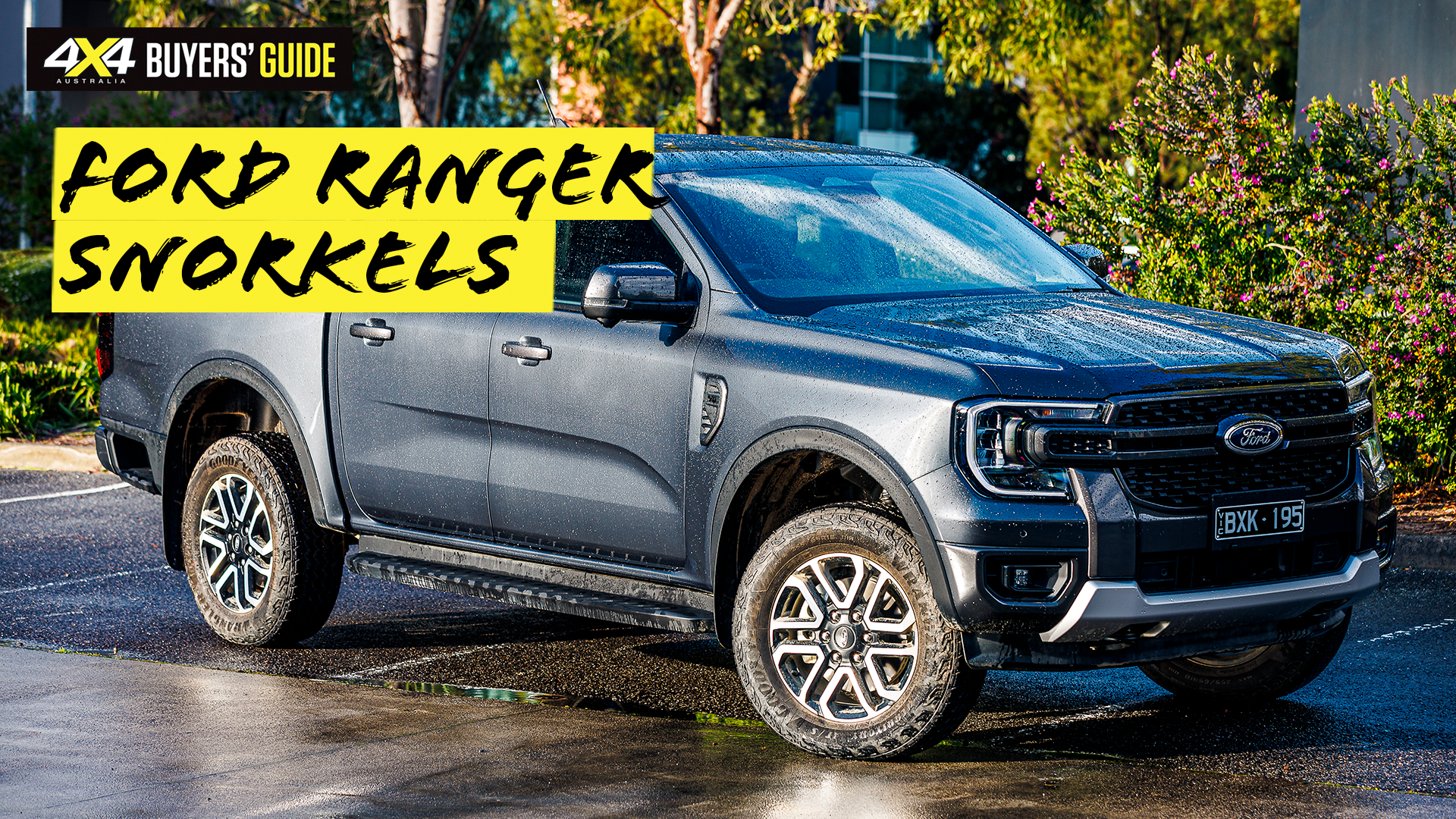 Ranger Accessories
Ranger AccessoriesFord Ranger snorkels
Prepare for dust and high waters by installing a well-made aftermarket snorkel
-
 Ranger Accessories
Ranger AccessoriesFord Ranger bullbars
One of the most popular aftermarket accessories, and for good reason
-
 Ranger Accessories
Ranger AccessoriesFord Ranger recovery points
Rated recovery points are an essential accessory for off-road enthusiasts

